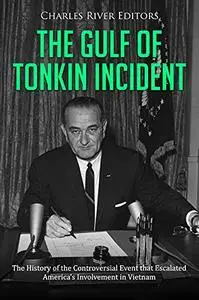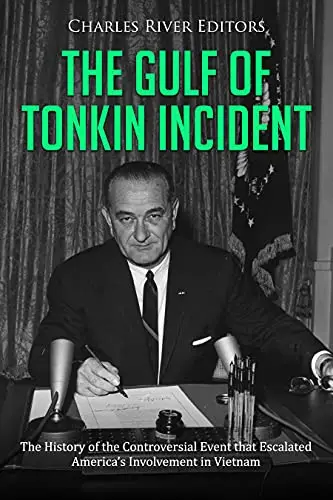The Gulf of Tonkin Incident: The History of the Controversial Event that Escalated America’s Involvement in Vietnam by Charles River Editors
English | April 24, 2021 | ISBN: N/A | ASIN: B093G2ZSCX | 68 pages | EPUB | 2.13 Mb
English | April 24, 2021 | ISBN: N/A | ASIN: B093G2ZSCX | 68 pages | EPUB | 2.13 Mb
*Includes pictures
*Includes a bibliography for further reading
*Includes a table of contents
“The last thing I wanted to do was to be a wartime President.” – Lyndon B. Johnson
The Vietnam War could have been called a comedy of errors if the consequences weren’t so deadly and tragic. In 1951, while war was raging in Korea, the United States began signing defense pacts with nations in the Pacific, intending to create alliances that would contain the spread of Communism. As the Korean War was winding down, America joined the Southeast Asia Treaty Organization, pledging to defend several nations in the region from Communist aggression. One of those nations was South Vietnam.
Before the Vietnam War, most Americans would have been hard pressed to locate Vietnam on a map. South Vietnamese President Diệm’s regime was extremely unpopular, and war broke out between Communist North Vietnam and South Vietnam around the end of the 1950s. Kennedy’s administration tried to prop up the South Vietnamese with training and assistance, but the South Vietnamese military was feeble. A month before his death, Kennedy signed a presidential directive withdrawing 1,000 American personnel, and shortly after Kennedy’s assassination, new President Lyndon B. Johnson reversed course, instead opting to expand American assistance to South Vietnam.
In 1964, the USS Maddox was an intelligence-gathering naval ship stationed off the coast of North Vietnam for the purpose of gathering information about the ongoing conflict between North Vietnam and South Vietnam. The borders between the two sides were in dispute, and the United States was less up to date on changes in these borders than the two belligerents. In the process, the USS Maddox accidentally crossed over into North Vietnamese shores, and when the ship was sighted by North Vietnamese naval units, they attacked the Maddox on August 2, 1964.
Though no Americans were hurt, naval crews were on heightened alert as the Maddox retreated to South Vietnam, where it was met by the USS Turner Joy. Two days later, the Maddox and Turner Joy, both with crews already on edge as a result of the events of August 2, were certain they were being followed by hostile North Vietnamese boats, and both fired at targets popping up on their radar.
The fighting on August 2, can be verified through a variety of sources and an accounting of materials expended. However, the mystery of the Gulf of Tonkin begins with what the Maddox’s Captain John J. Herrick believed was a second attack that spanned August 4 and into the following morning. He reported to officials that there was such an attack despite lack of visual confirmation. The Ticonderoga passed along the report of an August 4 attack, with some visual evidence gathered by sailors and officers.
After this second encounter, Johnson gave a speech over radio to the American people shortly before midnight on August 4th. He told of attacks on the high seas, suggesting the events occurred in international waters, and he vowed the nation would be prepared for its own defense and the defense of the South Vietnamese. On the strength of Herrick’s report, on August 5, as part of the retaliatory action, Johnson ordered aerial attacks against the coastline’s patrol bases and oil storage facilities. These represented the first purely American attacks against North Vietnam, named Operation Pierce Arrow. Lieutenant Everett Alvarez, an American pilot from the USS Constellation, was shot down and became the first American aviator to be captured. Fellow pilot Richard Sather received the unfortunate distinction of becoming the first American aviator to be killed in Vietnam.
It would be years before the government revealed that the second encounter was no encounter at all. The government never figured out what the Maddox and Turner Joy were firing at the night of August 4, but there was no indication that it involved the North Vietnamese.
Feel Free to contact me for book requests, informations or feedbacks.
Without You And Your Support We Can’t Continue
Thanks For Buying Premium From My Links For Support
Without You And Your Support We Can’t Continue
Thanks For Buying Premium From My Links For Support



